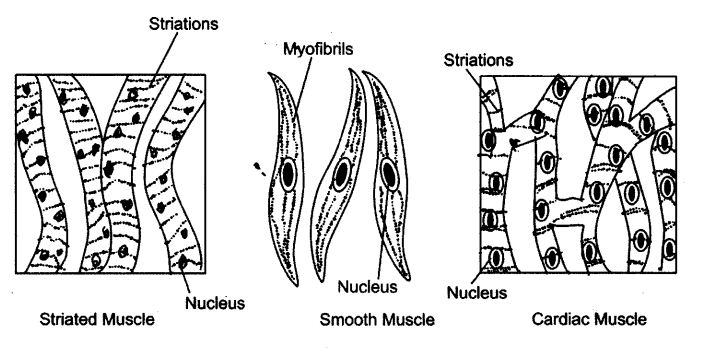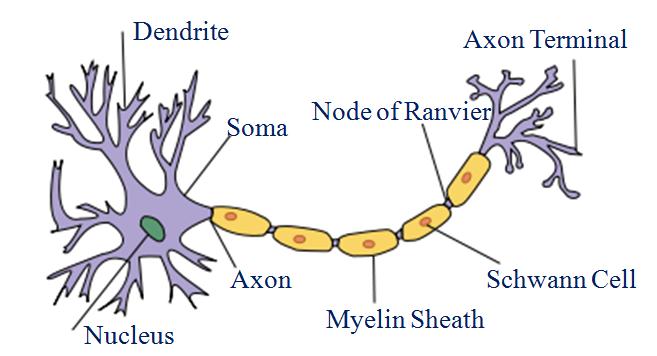EVENTS CONVENT HIGH SCHOOL
HINDI (CHAPTER-3)
सवैया और कवित्त
______________________________________
प्रश्न 1.कवि ने ‘श्रीब्रजदूलह’ किसके लिए प्रयुक्त किया है और उन्हें संसार रूपी मंदिर का दीपक क्यों कहा है?
उत्तर-
कवि आत्मकथा लिखने से इसलिए बचना चाहता है, क्योंकि
- उसमें मन की दुर्बलताओं, भूलों और कमियों का उल्लेख करना होगा।
- उसके द्वारा धोखा देने वालों की पोल-पट्टी खुलेगी और फिर से घाव हरे होंगे।
- उससे कवि के पुराने दर्द फिर से हरे हो जाएँगे। उसकी सीवन उधड़ जाएगी।
- उसमें निजी प्रेम के अंतरंग क्षणों को भी सार्वजनिक करना पड़ेगा। जबकि ऐसा करना उचित नहीं है। निजी प्रेम के क्षण गोपनीय होते हैं।
प्रश्न 2.पहले सवैये में से उन पंक्तियों को छाँटकर लिखिए जिनमें अनुप्रास और रूपक अलंकार का प्रयोग हुआ है?
उत्तर-पहले सवैये में अनुप्रास अलंकार वाली पंक्तियाँ हैं
- कटि किंकिनि कै धुनि की मधुराई – ‘क’ वर्ण की आवृत्ति के कारण।
- ‘पट पीत’ – में ‘प’ वर्ण की आवृत्ति के कारण।
- हिये हुलसै – में ‘ह’ वर्ण की आवृत्ति के कारण।
रूपक अलंकार
मुखचंद्र – मुख रूपी चंद्रमा
जग मंदिर दीपक – जग (संसार) रूपी मंदिर के दीपक।
प्रश्न 3.निम्नलिखित पंक्तियों का काव्य-सौंदर्य स्पष्ट कीजिए
पाँयनि नूपुर मंजु बजें, कटि किंकिनि कै धुनि की मधुराई।
साँवरे अंग लसै पट पीत, हिये हुलसै बनमाल सुहाई।।
उत्तर-
स्मृति को ‘पाथेय’ अर्थात् रास्ते का भोजन या सहारा या संबल बनाने का आशय यह है कि कवि अपने प्रेम की मधुर यादों के सहारे ही जीवन जी रहा है।
प्रश्न 4.दूसरे कवित्त के आधार पर स्पष्ट करें कि ऋतुराज वसंत के बाल-रूप का वर्णन परंपरागत वसंत वर्णन से किस प्रकार भिन्न है।
उत्तर-
ऋतुराज वसंत के बाल रूप का वर्णन परंपरागत वसंत वर्णन से पूर्णतया भिन्न है। वसंत के परंपरागत वर्णन में प्रकृति में चहुंओर बिखरे सौंदर्य, फूलों के खिलने, मनोहारी वातावरण होने, पशु-पक्षियों एवं अन्य प्राणियों के उल्लसित होने, नायकनायिका की संयोग अवस्था का वर्णन एवं सर्वत्र उल्लासमय वातावरण का वर्णन होता है, वहीं इस कवित्त में ऋतुराज वसंत को कामदेव के नवजात शिशु के रूप में चित्रित किया है। इस बालक के साथ संपूर्ण प्रकृति अपने-अपने तरीके से निकटता प्रकट करती है। इस बालक का पालनी पेड़-पौधे की डालियाँ, उसका बिछौना, नए-नए पल्लव, फूलों का वस्त्र तथा हवा द्वारा उसके पालने को झुलाते हुए दर्शाया गया है। पक्षी उस बालक को प्रसन्न करते हुए बातें करते हैं तो कमल की कली उसे बुरी नजर से बचाती है और गुलाब चटककर प्रात:काल उसे जगाता है।
प्रश्न 5.‘प्रातहि जगावत गुलाब चटकारी दै’- इस पंक्ति का भाव स्पष्ट कीजिए।
उत्तर-
इस कथन के माध्यम से कवि कहना चाहता है कि निजी प्रेम के मधुर क्षण सबके सामने प्रकट करने योग्य नहीं होते। मधुर चाँदनी रात में बिताए गए प्रेम के उजले क्षण किसी उज्ज्वल कहानी के समान होते हैं। यह गाथा बिल्कुल निजी संपत्ति होती है। अतः आत्मकथा में इनके बारे में कुछ लिखना अनावश्यक है।
प्रश्न 6.चाँदनी रात की सुंदरता को कवि ने किन-किन रूपों में देखा है?
उत्तर-
चाँदनी रात की सुंदरता को कवि ने निम्नलिखित रूपों में देखा है
- आकाश में फैली चाँदनी को पारदर्शी शिलाओं से बने सुधा मंदिर के रूप में, जिससे सब कुछ देखा जा सकता है।
- सफेद दही के उमड़ते समुद्र के रूप में।
- ऐसी फ़र्श जिस पर दूध का झाग ही झाग फैला है।
- आसमान को स्वच्छ निर्मल दर्पण के रूप में।
प्रश्न 7.‘प्यारी राधिका को प्रतिबिंब सो लगत चंद’ – इस पंक्ति का भाव स्पष्ट करते हुए बताएँ कि इसमें कौन-सा अलंकार है?
उत्तर-
कवि ने स्वप्न में अपनी प्रेमिका को आलिंगन में लेने का सुख देखा था। उसने सपना देखा था कि उसकी प्रेमिका उसकी बाहों में है। वे मधुर चाँदनी रात में प्रेम की चुलबुली बातें कर रहे हैं। वे खिलखिला रहे हैं, हँस रहे हैं, मनोविनोद कर रहे हैं। उसकी प्रेमिका के गालों की लाली ऊषाकालीन लालिमा को भी मात देने वाली है।
प्रश्न 8.तीसरे कवित्त के आधार पर बताइए कि कवि ने चाँदनी रात की उज्ज्वलता का वर्णन करने के लिए किन-किन उपमानों का प्रयोग किया है?
उत्तर-
तीसरे कवित्त में कवि ने चाँदनी रात की उज्ज्वलता के वर्णन के लिए कवि ने निम्नलिखित उपमानों का वर्णन किया है
- स्फटिक शिला
- सुधा मंदिर
- उदधि-दधि
- दही का उमड़ता समुद्र
- दूध का फेन
प्रश्न 9.पठित कविताओं के आधार पर कवि देव की काव्यगत विशेषताएँ बताइए।
उत्तर-
हम महान, प्रसिद्ध और कर्मठ लोगों की आत्मकथा पढ़ना चाहेंगे।
क्यों—हमारी रुचि अपने-से महान लोगों में होती है। हम सफल लोगों की जीवन-गाथा पढ़कर जानना चाहते हैं कि उन्होंने सफलता कैसे प्राप्त की? वे विपत्तियों से कैसे जूझे? उनके बारे में पढ़कर हमें कुछ सीखने और आगे बढ़ने की प्रेरणा मिलती हैं
शिल्प सौंदर्य
भाषा – कवि देव ने इन कविताओं में मधुर ब्रजभाषा का प्रयोग किया है।
छंद – देव ने कवित्त एवं छंदों का प्रयोग किया है।
गुण – देव की इन कविताओं में माधुर्य गुण है।।
बिंब – श्रव्य एवं दृश्य दोनों ही बिंब साकार हो उठे हैं।
अलंकार – देव ने अपनी कविताओं में अलंकारों का भरपूर प्रयोग किया है, जैसे- अनुप्रास, रूपक, उपमा मानवीकरण आदि।
अनुप्रास – कटि किंकिनि की, पट पीत, हिये हुलसै, पूरति पराग, मदन महीप आदि।
रूपक – मुखचंद, जग-मंदिर
उपमा – तारा-सी तरुनि, उदधि दधि को सो
मानवीकरण – ‘पवन झुलावै केकी-कीर बतरावै … चटकारी दै’-पूरी कविता में।।
रचना और अभिव्यक्ति
प्रश्न 10.आप अपने घर की छत से पूर्णिमा की रात देखिए तथा उसके सौंदर्य को अपनी कलम से शब्दबद्ध कीजिए।
उत्तर-
पूर्णिमा रात्रि में चंद्रमा का सौंदर्य निराला होता है। गोल बड़े थाल से आकार वाला चाँद मधुर, मनोहर शीतल चाँदनी बिखेरता है। जिससे पूर्णिमा की रात का सौंदर्य कई गुना बढ़ जाता है। इस रात में प्रकृति का एक-एक अंग लुभावना प्रतीत होता है। ऐसा लगता है जैसे चाँदनी की सफ़ेद चादर सी फैला दी गई है। आसमान स्वच्छ निर्मल दिखता है। चाँद की उज्ज्वल चमक में कुछ तारे झिलमिलाते हुए प्रतीत होते हैं। ऐसे में चाँदनी रात का सौंदर्य इतना बढ़ चुका होता है कि उसके कारण धरती आकाश और ताल-सरोवर सभी कुछ सुंदर लगते हैं।
अन्य पाठेतर हल प्रश्न
प्रश्न 1.श्रीकृष्ण के शरीर पर कौन-कौन से आभूषण मधुर ध्वनि उत्पन्न कर रहे हैं?
उत्तर-
श्रीकृष्ण के शरीर अर्थात् पैरों में नूपुर और कमर में बँधी करधनी में भी छोटे-छोटे मुँघरू लगे हैं। इन आभूषणों से उसे समय मधुर ध्वनि पैदा होती है, जब श्रीकृष्ण चलते हैं। इन आभूषणों की ध्वनि अत्यंत कर्ण प्रिय और मधुर है।
प्रश्न 2.श्रीकृष्ण का शरीर कैसा है? उसका सौंदर्य किस कारण बढ़ गया है?
उत्तर-
श्रीकृष्ण का शरीर साँवला-सलोना है। उस साँवले शरीर पर उन्होंने पीला वस्त्र धारण कर रखा है। उनके गले में पड़ी वनमाला (वन पुष्पों की माला) उनके हृदय तक लटक रही है। इस पीले वस्त्र और वनमाला के कारण उनका सौंदर्य बढ़ गया है।
प्रश्न 3.श्रीकृष्ण के मुख की तुलना किससे की गई है और क्यों ?
उत्तर-
श्रीकृष्ण का मुख चंद्रमा के समान सुंदर है। उनके मुख की तुलना चंद्रमा से की गई है। इसका कारण यह है कि जिस पर चाँदनी फैलकर चाँद को अधिक सुंदर बना देती है, उसी प्रकार श्रीकृष्ण के मुखमंडल पर विराजित हँसी (मुसकान) उनके सौंदर्य को बढ़ा देती है।
प्रश्न 4.श्रीकृष्ण की तुलना किससे की गई है और क्यों ?
उत्तर-
श्रीकृष्ण की तुलना जगरूपी मंदिर में जलते दीपक से की गई है। इसका कारण यह है कि जिस तरह मंदिर में जलता दीपक अंधकार को समाप्त कर अपने प्रकाश से आलोकित किए रहता है उसी प्रकार श्रीकृष्ण भी अपने रूप सौंदर्य से संसार को आलोकित किए हुए हैं।
प्रश्न 5.कवि देव अपनी सहायता के लिए किसका आहवान कर रहे हैं?
उत्तर-
कवि देव अपनी सहायता के लिए ब्रजवासियों के मध्य दूल्हे की भाँति पुरुष अर्थात् श्रीकृष्ण से अपनी सहायता करने के लिए आह्वान कर रहे हैं कि श्रीकृष्ण सदैव उनके मददगार बने रहें।







